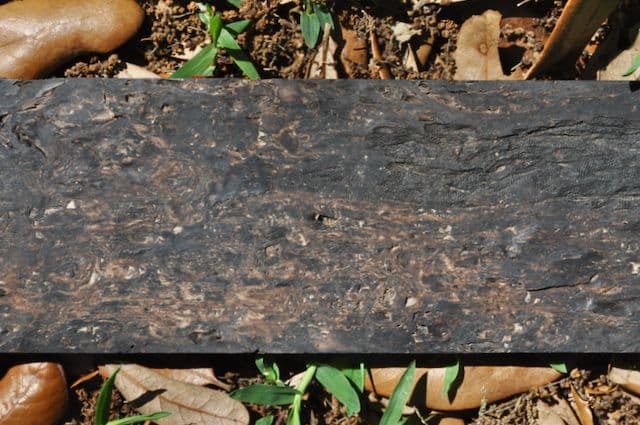1. Pyrus™ achieves a wood-like density and strength using bacterial cellulose derived from SCOBY waste. Could you describe the key stages in transforming this microbial byproduct into a machinable, wood-like material?
At their basic level, the steps of our process are rather simple: removing excess kombucha from the BC pellicles (what you called the waste SCOBY), mixing for consistency, molding it in our proprietary molds, and finally drying it using our proprietary tech.
2. Bacterial cellulose offers exceptional mechanical properties and purity. What aspects of its molecular structure make it especially suited to replicate dense tropical hardwoods like ebony or rosewood?
With BC, it’s important to understand what aspects of materials confer certain mechanical properties. For example, in tree-derived wood, flexibility can vary greatly depending on direction due to the directional growth of cellulose fibers (toward the sun and against gravity).
This directionality isn’t present in BC. The fibers link up in random orientations, making the mechanical properties roughly isotropic. This can be advantageous in certain applications. While nanoscale properties don’t always translate to consumer-scale use, our 'basic' Pyrus™ exhibits the compressive strength of marble and flexibility of vinyl tile.
Importantly, our Pyrus™ has already measured denser than any wood (>1.3 g/cm³), and we can customize its density to match or surpass exotic hardwoods.

3. What measures have you developed to ensure consistency in Pyrus™'s physical properties, given the natural variation in SCOBY inputs across different brewery partners?
We began with waste SCOBY from kombucha breweries, but as we scale, we’ll produce our own BC from various food wastes, enabling greater consistency.
In the meantime, sourcing from the world’s largest kombucha brewery provides stability, and our mixing process homogenizes the material. Think of it like a 1-liter bag of potting soil, while gram-to-gram samples may vary, the bag as a whole remains consistent.
4. Many materials struggle to match both the hardness and aesthetic of exotic woods. How did you tune the visual grain and surface finish of Pyrus™ to meet design demands while staying true to its biomaterial origins?
The current look of 'basic' Pyrus™ is a natural result of our process, and we find it quite lovely. That said, we are exploring ways to create different grains, tones, and patterns, knowing buyers expect aesthetics aligned with product type.
Every variation will remain non-toxic and fossil-free, with new stiffening or coloring agents sourced from waste.
5. When introducing Pyrus™ to industries traditionally reliant on tropical hardwoods, what technical data or performance validations have proved most critical to gaining trust?
We don’t yet have performance validations for products like fretboard blanks, but we’ve had positive machinability feedback from a major guitar manufacturer, and are in talks for a co-development agreement to fully assess acoustic and mechanical properties.
6. The notion of localized feedstock sourcing through brewery waste is compelling. How does this model affect your scalability roadmap, particularly for global applications?
We’re already testing BC production from other food wastes like beer brewery waste and apple pomace. For instance, orange peel waste from Kern County, CA alone could yield enough Pyrus™ to cover 10% of U.S. hardwood flooring production.
Once we tap into global food waste streams, the real limitation becomes market acceptance, not supply.

7. In what ways has the absence of petroleum-based additives or toxic resins shaped your material’s lifecycle strategy, especially its compostability, recyclability, or potential for safe incineration?
Actually, it’s the other way around. Our non-toxic, compostable lifecycle goal shaped our entire manufacturing approach. Staying fossil-free is challenging, but it’s central to our mission.
Because our process starts at the nano-scale, we can add safe compounds before the material solidifies. That’s a flexibility that wood or stone doesn’t offer.
8. Given that Pyrus™ replaces highly regulated woods like rosewood, how do you position its compliance profile, both in terms of trade certifications and ecological impact metrics?
With Pyrus™ pyrus, our base material, being derived from an edible source, we expect it to qualify as GRAS (Generally Recognized as Safe). Future versions will use food-grade additives, agri-waste, or minerals, and undergo certified lab testing to confirm safety.
9. As industrial buyers increasingly search not just by supplier but by specific product attributes (hardness, carbon score, finish), how do you ensure Pyrus™ is documented and discoverable through structured technical data?
One word: testing. Each version of Pyrus™ will have a Product Data Sheet (PDS) and Safety Data Sheet (SDS).

10. Looking ahead, how do you see biomaterials like Pyrus™ being integrated into design software, supply networks, or AI-driven sourcing tools that prioritise verified environmental performance?
It’s a lot of work, but it’s essential. Products already in the market have done this homework. We’ll do the same, and more, to displace conventional tropical hardwoods.
12. What role do you see Symmetry Wood playing in shifting industry mindsets, from valuing materials purely for origin or rarity, to valuing regenerative processes and transparency in sourcing?
Transparency is baked into our origin story. Our kombucha supplier is widely known, and the idea of Pyrus™ from food is as fascinating as it is familiar. Rather than hiding processes, we embrace them. This clarity empowers our customers to be transparent, too.








